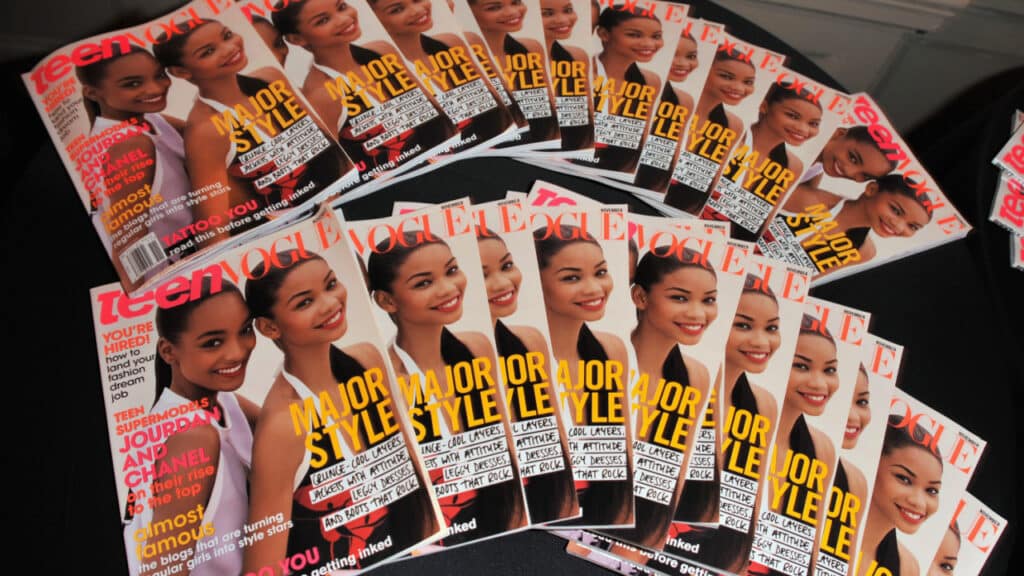Most of Our Moms Are Older Than Their Right to Have a Credit Card. Here’s the History Behind It
Owning a bank account and a credit card are essential financial necessities today. But did you know that the government only allowed women to obtain a credit card in their own name in 1974? Before the Equal Credit Opportunity Act of 1974, women in the U.S. couldn’t own one without a male co-signer.
The road to financial freedom
Access to banking allows people to gain economic independence and benefit from credit, investments, and money management. However, that wasn’t always the case for women. Much like most women’s rights, the road to financial freedom was hard-fought and continues to evolve even today.
Since ancient times, access to money, property ownership, and financial independence has been fickle for women. In Ancient Egypt, women could engage in economic activities and were responsible for their own financial transactions. Meanwhile, Assyrian women circa 1900 BC played an essential role in commerce. Although their contributions were erased from history, vestiges have proven they were the “first-known businesswomen, female bankers and female investors in the history of humanity.”
In contrast, Roman law excluded women from direct property ownership and from money transactions. According to the ancient jurist Callistratus, women were prohibited from engaging in official banking or money-lending activities. Or at least they were in theory. New studies and epigraphic evidence suggest that Roman women had legitimate channels for lending and borrowing money. In fact, Universitat Jaume I Roman Law professor Carmen Lázaro sustains that they were responsible for some of the first documented microcredits.
Lázaro supports her claims with inscriptions from the Roman Granio House in Pompeii. The epigraphs documented transactions carried out by a moneylender named Faustilla with other women. Faustilla lent money to women at 6.15% interest and took minor items, such as coats or jewelry, as collateral. Interestingly, these transactions didn’t require the approval of a male tutor, unlike other legal matters back in the day.
Credit for women before 1974
Although the banking and credit system evolved alongside industrialization and technological advances, women remained sidelined from credit access for centuries. In modern times, women experienced state economic violence through policies that limited their freedom. They faced issues such as unequal wages, mandatory male guardianship, and required co-signature for banking services, which directly affected their credit options and financial agency.
Before the Equal Credit Opportunity Act, access to credit was largely denied to women on the basis of assumptions. For example, financial institutions denied credit to working women who supported themselves, assuming they’d eventually get married. They would then “quit [their] jobs, have babies, and default on [their] loan.”
Women required the endorsement of a male relative to apply for a credit card. The bank, however, could refuse to issue credit cards to unmarried women. Co-signatures were mandatory, even for women with established jobs or breadwinners, even if they earned more than the men.
The effects of credit access discrimination extended to married couples, whose mortgage applications didn’t account for women’s incomes. In fact, for a woman’s income to be potentially considered, couples had to present “baby letters.” These documents were medical certificates where a doctor would attest that the woman had undergone a hysterectomy or had any other birth control system in place.
Credit access and economic freedom are still challenges today
The Equal Credit Opportunity Act of 1974 made it illegal to refuse women credit cards on the basis of their gender. However, that’s not to say credit access and rates are fair for women. Even today, women, in particular women of color, face challenges receiving credit and loans. In 2020, the U.S. Federal Reserve System reported that women were more likely to “have credit card debt and to be denied or approved for less when they applied for credit products.” This is partly due to pay gaps and unfair distribution of financial burdens.
In Mexico, the reform of the Civil Code allowed married women to manage their own assets, enabling them to open bank accounts and handle their finances without their spouses’ authorization. According to research by the Inter-American Development Bank (IDB), 52% of women in Latin America do not have a bank account. The five countries with the lowest financial inclusion of women in the region are Nicaragua, Peru, Honduras, El Salvador, and Colombia. In Nicaragua, only 14% of women have a bank account. Peru follows with 22%, Honduras with 24%, El Salvador with 29%, and Colombia with 33%.
Economic violence against women has also taken new forms.
The UN Human Rights Council’s (OHCHR) notes that discriminatory legal frameworks impacting women’s access to “credit, employment, social protection, or property and land rights” are still in place. Globally, 1.4 billion women live in countries where economic violence is not recognised. Meanwhile, 3.9 billion women face legal barriers that affect their financial participation.
Moreover, economic violence against women is used as a form of abuse and oppression in the home
According to the National Network to End Domestic Violence, financial abuse “is one of the most powerful methods of keeping a survivor trapped in an abusive relationship.” It can take many forms, and as per research, 99% of the domestic violence cases involve economic violence.
When it comes to credit cards and credit access, a common abuse tactic is to damage the victim’s credit score on purpose. Abusers could issue credit cards in the name of their victims or use the victim’s cards to accumulate debt. Women could also fall into debt, coerced by abusive partners, which exposes them to greater barriers when they decide to end the relationship.
Though some countries have introduced policies and safeguards, the credit repair process for survivors is often lengthy and complicated. In many cases, women are left to pay off the debt on their own, directly affecting their independence and possibilities to rebuild their lives.




